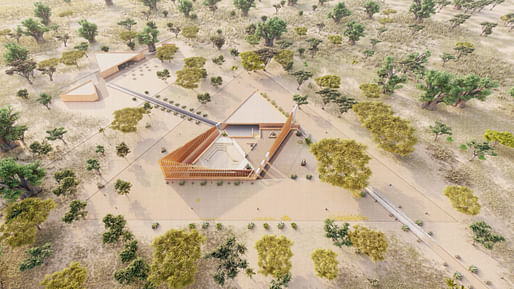
A historic new museum is set to take shape in West Africa, the vision of the Josef and Anni Albers Foundation and designer Mariam Kamara of Niger’s atelier masōmī.
Bët-bi is said to be the first institution dedicated to the (temporary) collection and display of repatriated objects taken from their native lands in a reversal of controversial practices which have been at the heart of many Western museum operations since their beginnings in Colonialism.

The studio beat out four other firms based in Africa for the commission, including Rwanda’s MASS Design Group and the Moroccan firm Aziza Chaouni Projects.
Located in the Kaolack region of southern Senegal, Bët-bi (or “The Eye” in Wolof) aims to position itself as an intermediary between Western art-collecting institutions and surrounding nations in addition to serving in its functional capacity as an educational fount to the area. In this regard, its mission and scope are similar to that of the planned Edo Museum of West African Art being designed by Adjaye Associates. Both are reportedly set for openings in 2025.
Kamara, whose past work has imported academic notions of place and memory in architecture, said that “For far too long, our region has been a place where cultural wealth is pillaged to profit museum collections. This project is an opportunity to design a new type of space that is inspired by the roots and spiritual legacy of the region. It is a chance to push the boundaries of what defines a museum in the 21st century.”
“We approached this project through a look back at the site’s past,” the award-winning designer continued. “We looked at the history of the Saloum Kingdom very closely and have been absolutely fascinated by its origin story, as a place jointly founded by the Serer and the Mandinka people. The latter are historically also a people from the Mali empire who are known for their monumental architecture. As museums and galleries are a product of our more recent past, it is important for me that the project serves as a bold imperative to continue the recent dialogue around rethinking the typology in order to explore new spatial languages around museums.”
No Comments
Block this user
Are you sure you want to block this user and hide all related comments throughout the site?
Archinect
This is your first comment on Archinect. Your comment will be visible once approved.